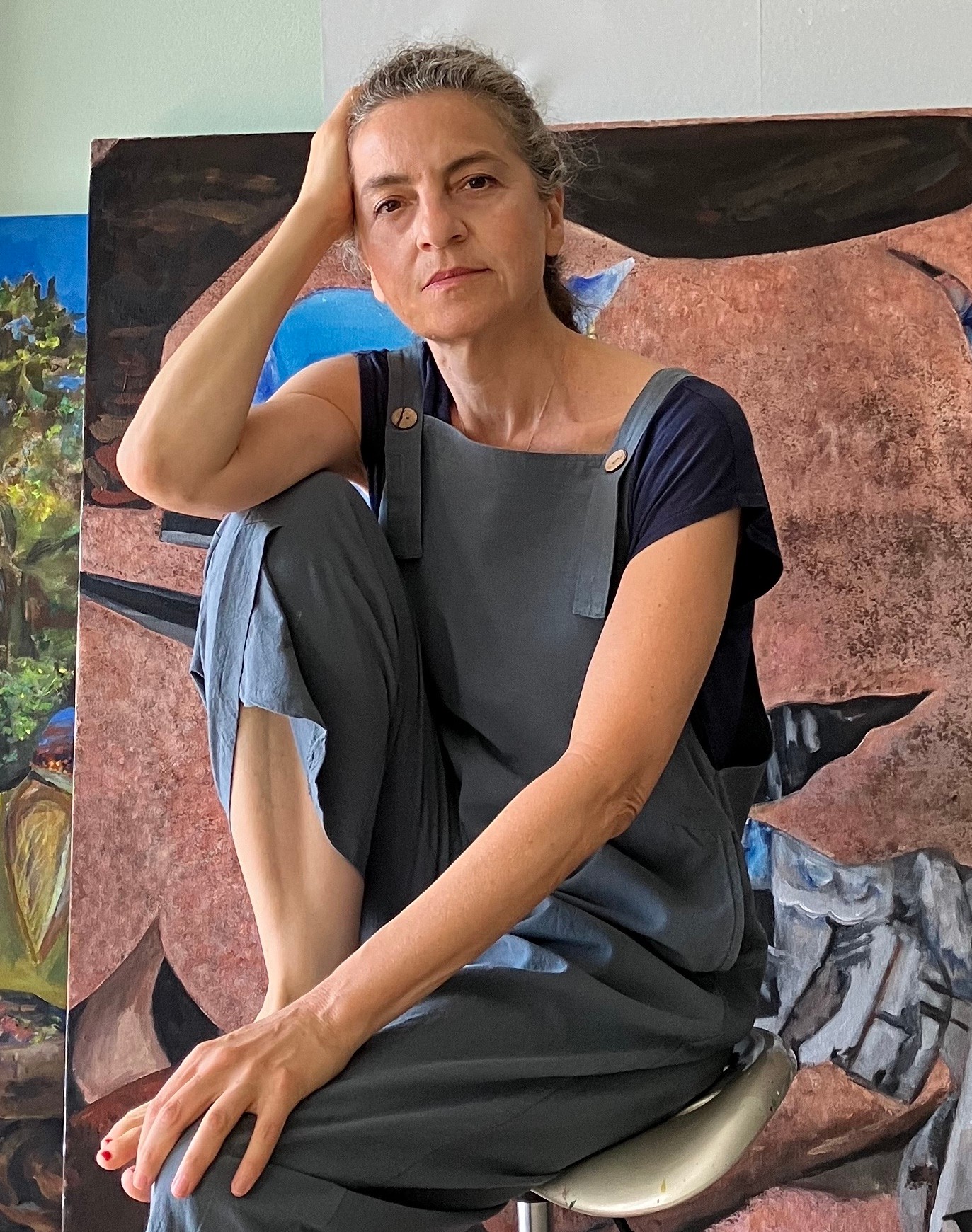We caught up with the brilliant and insightful Raphaele Cohen-Bacry a few weeks ago and have shared our conversation below.
Hi Raphaele, thanks for joining us today. Can you talk to us about how you learned to do what you do?
Early on I learned a great deal by visiting museums, observing and copying any artwork I loved, just for the pleasure of feeling closer to it. That was an effective way to train and educate the eye. Then I attended several academic classes in Paris, including live model sessions, printmaking and painting. Since then it has been a lot of experimentation, exploration of different media, pushing them to their limits. I particularly like to revisit ancient methods or divert techniques towards new territories to obtain unusual textures, volumes and disconcerting results.
I am not interested in speeding up the process. It is a lifelong and ever changing experience with no ending, so there is really no way I can get “there” quicker. And who’s in a hurry anyway?
Most essential skills?
Curiosity, a balance of humility and ambition, a willingness to take risks and leave room for the unexpected. I believe these are more important than the technical skills, although you do need some agility and a sense for color combination and composition.
Obstacles?
Being exposed to a lot of images can become an impediment and make it more difficult to find your own personal voice. Influences are impossible to avoid so you have to choose your guides wisely. We have a tendency to want to belong to groups or movements, as it is reassuring and it gives a sense of empowerment. But it narrows our horizons and gets in our ways as artists. For example there are artists I neglected to study because my teachers thought poorly of them, but later on I re-discover these, such as Dali for example, and admired their work. So again, beware of influences and critics.


As always, we appreciate you sharing your insights and we’ve got a few more questions for you, but before we get to all of that can you take a minute to introduce yourself and give our readers some of your back background and context?
I am an interdisciplinary artist working across collage, painting, assemblage, video, and sculptural installations.
I also give workshops and lectures, as part of an artist residency or a solo exhibition. These are not your common art classes: I am also a Board certified health and wellness coach so I integrate powerful coaching techniques in my workshops.
My creative process starts with a hypothesis or a vision. I then choose one or several techniques (some of which I invented) to test my theory and I build a project around it. I guess that makes me more of an innovator, a researcher, using the scientific method in an artistic way.
I work on several pieces at the same time, with a good dose of unknown, and once the project takes shape I fine tune the process and add more refined pieces.
For example, I recently completed a collection of burned statuettes that I am very happy with. I was first interested in the action of fire as a medium and had the rough idea of applying it to salt dough to give it a new dimension. This project started to develop before the Los Angeles fires and got an even deeper meaning after this tragic episode.
I am now concentrating on a large series of paintings of all sizes. I take advantage of my long experience with the medium, and combine it with the exploration of collage I have conducted the last several years. I call it “Back to the wild” as these new paintings are free and raw.


Have you ever had to pivot?
Indeed. Although I was always attracted to the arts in general I was also interested in science. While developing my art practice I also spent 6 years in a French university to study pharmacology, toxicology, botany, chemistry and so on. I got my doctorate in pharmacy and worked as a pharmacist until I got exposed to integrative medicines and homeopathy in particular. This shifted my way of thinking about health and well-being. I discovered the mind-body-spirit connection and the necessity to be aligned with my core beliefs. The next step was to decide to become a full-time artist. There are times when we are given an opportunity to challenge all that we knew before and to reconsider our choices and directions.


Are there any books, videos or other content that you feel have meaningfully impacted your thinking?
There are many so I will mention a few books and movies I discovered recently:
“Mutant Message Down Under”, a book by Marlo Morgan who was a physician who got to live with an Aboriginal tribe for several months. It completely turned my head upside down. A very important book to help us decipher what is really important.
“Devi”, a 1960 movie by Satyajit Ray. It is just a beautiful movie, intense and phantasmagoric. It amazes me that a culture that seems so far from mine can produce an artwork that is able to profoundly move me.
This year I also read several books by Kazuo Ishiguro, and I particularly recommend “An Artist of the Floating World”.
Contact Info:
- Website: https://www.raphaelecohenbacry.com/


Image Credits
Raphaele Cohen-Bacry


